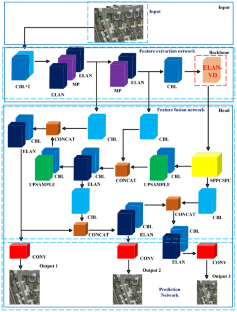Journal of Real-Time Image Processing ( IF 3 ) Pub Date : 2024-04-20 , DOI: 10.1007/s11554-024-01457-1 Johan Lela Andika , Anis Salwa Mohd Khairuddin , Harikrishnan Ramiah , Jeevan Kanesan

|
The advancement of unmanned aerial vehicles (UAVs) has drawn researchers to update object detection algorithms for better accuracy and computation performance. Previous works applying deep learning models for object detection applications required high graphics processing unit (GPU) computation power. Generally, object detection models suffer trade-off between accuracy and model size where the relationship is not always linear in deep learning models. Various factors such as architectural design, optimization techniques, and dataset characteristics can significantly influence the accuracy, model size, and computation cost in adopting object detection models for low-cost embedded devices. Hence, it is crucial to employ lightweight object detection models for real-time object identification for the solution to be sustainable. In this work, an improved feature extraction network is proposed by incorporating an efficient long-range aggregation network for vehicle detection (ELAN-VD) in the backbone layer. The architecture improvement in YOLOv7-tiny model is proposed to improve the accuracy of detecting small vehicles in the aerial image. Besides that, the image size output of the second and third prediction boxes is upscaled for better performance. This study showed that the proposed method yields a mean average precision (mAP) of 57.94%, which is higher than that of the conventional YOLOv7-tiny. In addition, the proposed model showed significant performance when compared to previous works, making it viable for application in low-cost embedded devices.
中文翻译:

改进轻量级 YOLOv7 模型中的特征提取网络,用于在低成本硬件上进行实时车辆检测
无人机 (UAV) 的进步吸引了研究人员更新目标检测算法,以提高准确性和计算性能。之前将深度学习模型应用于对象检测应用的工作需要较高的图形处理单元 (GPU) 计算能力。一般来说,对象检测模型需要在准确性和模型大小之间进行权衡,其中这种关系在深度学习模型中并不总是线性的。架构设计、优化技术和数据集特征等各种因素会显着影响低成本嵌入式设备采用对象检测模型的准确性、模型大小和计算成本。因此,采用轻量级对象检测模型进行实时对象识别对于解决方案的可持续性至关重要。在这项工作中,通过在骨干层中结合用于车辆检测的高效远程聚合网络(ELAN-VD),提出了一种改进的特征提取网络。提出了YOLOv7-tiny模型的架构改进,以提高航空图像中小型车辆检测的精度。除此之外,第二个和第三个预测框的图像尺寸输出被放大以获得更好的性能。这项研究表明,该方法的平均精度(mAP)为 57.94%,高于传统的 YOLOv7-tiny。此外,与之前的工作相比,所提出的模型显示出显着的性能,使其可以在低成本嵌入式设备中应用。



























 京公网安备 11010802027423号
京公网安备 11010802027423号